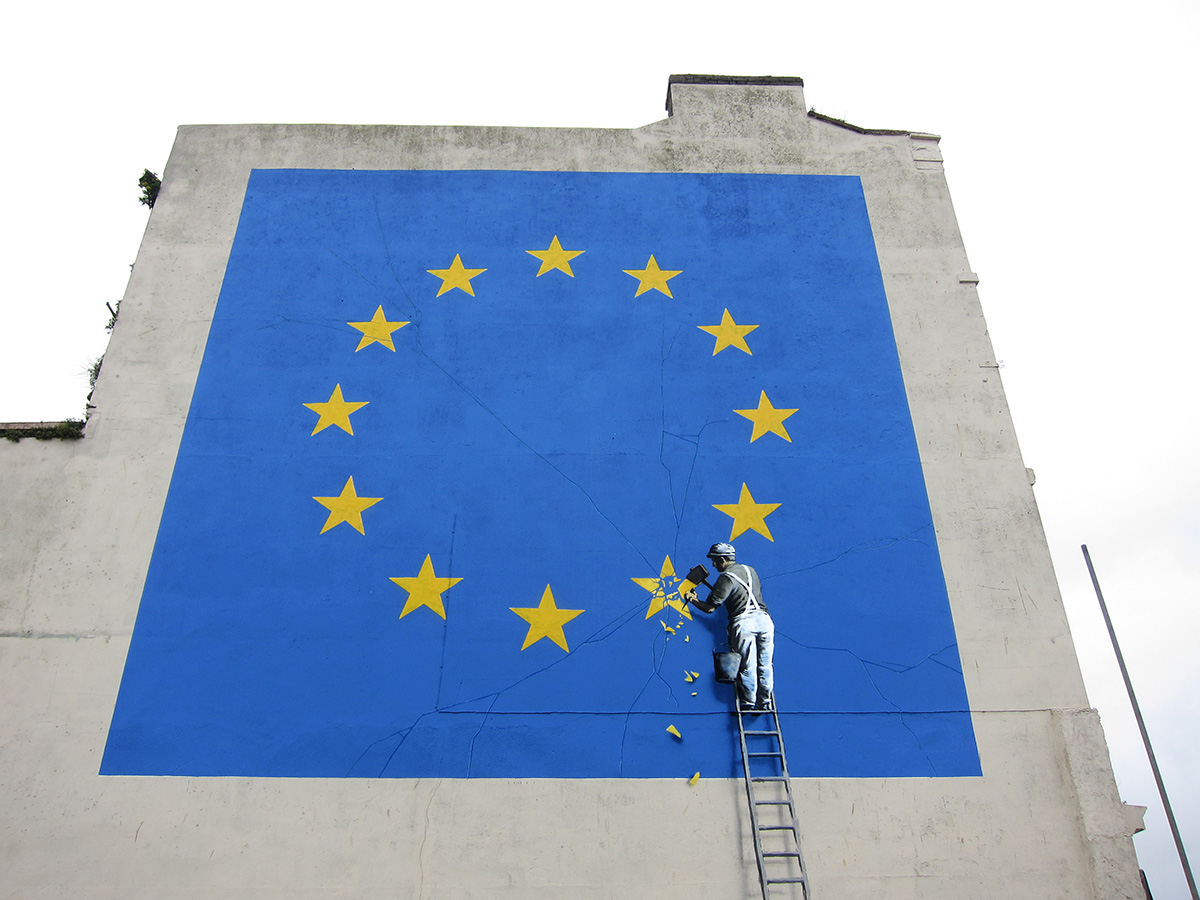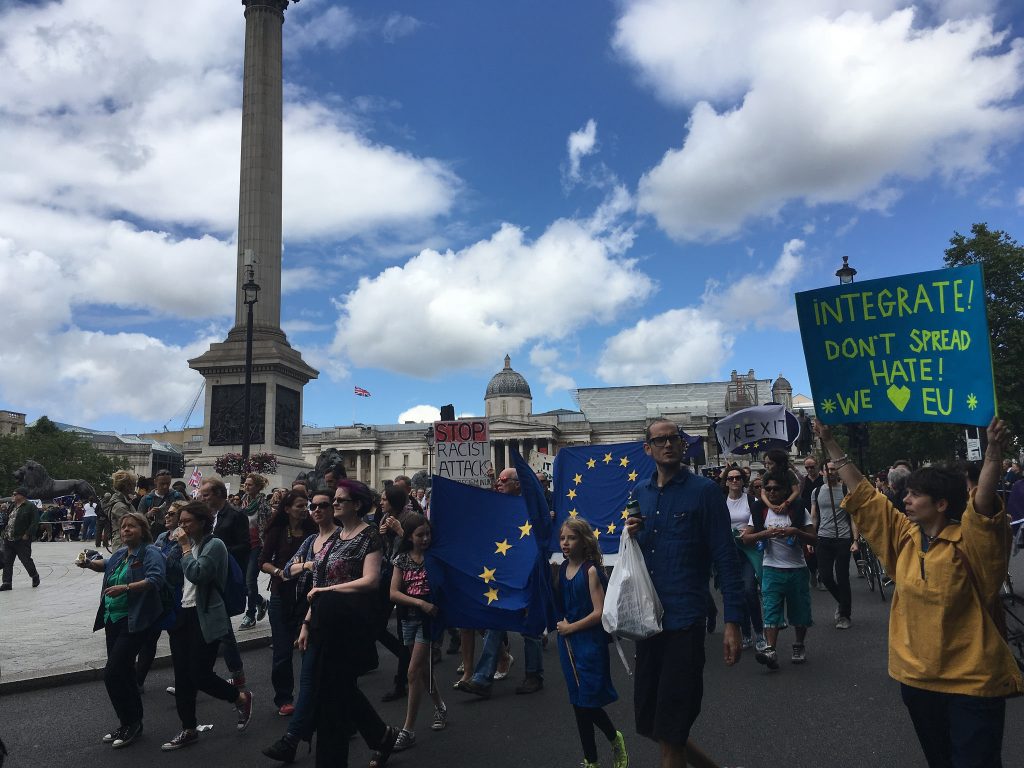
The post-war history of global trade has so far been like a cheery fairy-tale. Even as multilateral trade liberalization froze from the Doha round onwards, the proliferation of preferential trade agreements continued to facilitate liberalization. Looking back, it seems only natural that such a rosy tale was bound to take a twisted and unexpected turn.
Although considered the cornerstone of global cooperation, it is safe to say that until a few years ago, trade was not even a remote part of the popular political discourse. Recent developments in both the East and West have radically changed that. On the one side, trade was the focal point in Donald Trump’s election to White House. On the other side, hesitant but rising powers such as China proposed to uphold the global trading regime as a means of power projection.
It is intriguing discussions about the distributional consequences of trade have made their way from niche academic journals to prime time news television in just a few years. Even in the intellectual circles, the ripples are too strong to miss. Today, one can’t fathom the idea of preparing a list of America’s most influential public intellectuals without including the famous “China Shock” labour-trade economist, David Autor.
While the US and China move to brinkmanship, threatening tit-for-tat protectionism, we continue to lose interest in another major geopolitical event centred on trade: Brexit. Here lies perhaps the greatest contemporary British irony – while the world progressively loses interest in Brexit, UK’s politics can’t seem to focus on anything beyond it.
PM May’s “Pick and Choose” Strategy
In December 2017, the UK and EU managed to reach a transition deal on the terms and deadline, making way for the contentious trade negotiations. Since January this year, PM Theresa May has opted for a negotiating strategy that her European colleagues have pejoratively called the “pick and choose” strategy. London based Shashank Joshi, Senior Fellow at the Tony Blair Institute and Royal United Services Institute, argues that ‘pick and choose’ is just the EU’s characterization of the British strategy.
He told MJPS, “The UK argument is that the two sides are starting from a position of identical regulations and standards, that they should aspire to something more than the Canada-EU free trade agreement finalised last year. In particular, the UK wants some financial services to be included. The EU says this is picking and choosing (since the UK doesn’t want the immigration rules that come with the single market) but the UK points out that the EU itself had explored the prospect of including services in the Canada deal.”
Given a thin majority of 8 and in the absence of much popular support for her, PM May faces a stiff challenge. “Pick and choose” is one of the few possible ways for her to keep the Tories united, and at the same time meaningfully represents UK industry’s demands. What makes her job even tougher is the fact that she faces an unusually united European front. Joshi remarked, “In practice, the UK government has less negotiating power, and trade in services is only likely to be partially covered under any deal.”

The Costs of No Deal
While the scenario of a no-deal seems unlikely at this stage, it would be foolhardy to dismiss that political risk entirely. McGill University’s Assistant Professor of Political Economy, Leonardo Baccini, told MJPS, “The UK has always been part of Europe and, even if reluctantly, it has been always a key player in the EU. Brexit was an idiosyncratic event that no one forecasted and no one wanted, perhaps not even the Leave campaign. If Brexit is really inevitable and the UK leaves the EU, pragmatism would call for a trade agreement between the EU and the UK to mitigate the cost of Brexit and to overcome this accident of history. But these are not pragmatic times, unfortunately.”
A recent study conducted by Cambridge University’s Merdith Crowley highlights the sectoral impacts in the UK, given that there is ‘no deal’ and the EU and UK reverse back to the WTO tariffs. She notes that UK’s transportation, machinery, chemical, and fuel exports are likely to be the strongest hit – with each industry incurring a loss of around 30 billion pounds.
While Baccini finds Crowley’s assessment based on tariffs, quotas and anti-dumping extremely credible, he suggests an alternative method to evaluating the cost of Brexit. He remarks, “Another way of exploring the heterogeneous cost of Brexit by industries and products, would be to look at the structure of industries. If we do so, the industries that would lose the most from Brexit are those integrated in Global Values Chains (GVCs).”
Stating the example of the British signature automobile, Mini, he argues, “many of its parts and components are produced in Germany and then exported to the UK to be assembled in a plant in Oxford. If tariffs between Germany and UK increase as a result of Brexit, BMW would have incentives to move its production to Germany to enjoy preferential tariffs when exporting cars to other EU countries. In these industries, the impact of Brexit would be particularly severe.”
EU: Balancing Economics and Politics
While the costs of a no-deal will be the most severe in UK, EU members will have to undergo a fair share of losses. Baccini thinks that out of all the EU member states, the Irish economy will be the most severely hit. But for countries such as France, Germany and Sweden, the losses will be concentrated in specific industries and regions. He said, “For instance, wholesale and processing of fish in Northern France would face significant costs once the UK leaves the EU’s Common Fisheries Policy.”
Although the economic interests trump all else, it would be narrow to look at EU’s negotiating position from a purely economic point of view. Joshi remarked, “[the EU’s] main political goal is to keep the single market united and cohesive, ensuring that those inside it do not feel the UK has received better terms outside it. This is a priority, because of the eurozone crisis and some countries’ high degree of euroscepticism. The EU also wants to keep the UK closely involved in the security and defence of Europe as a whole.”

UK’s Brexit Options: Northern Irish Peace vs. Referendum Mandate
As argued by Financial Times’ Martin Sandbu, the transition terms agreed between the UK and EU last December have constrained UK’s negotiating options. The absence of any physical border between Ireland and Northern Ireland almost ensures that UK will be compelled to stay a part of the European Customs Union and accept EU’s rules on goods trade. This probable trade deal has come to be known as the “Jersey Model.” The alternative to the Jersey Model has been referred to as the “Canada plus-plus” (CETA plus-plus). A CETA-plus-plus essentially means a much deeper and broader trade deal, modelled after the EU-Canada agreement.
The Jersey model brings into question the very premise of the Brexit referendum. One of the chief interpretations of the referendum outcome was that the majority British populace wants to regain UK’s sovereignty by quitting the European Customs Union and the jurisdiction of the European Court of Justice. The Jersey model makes that scenario quite unlikely. The trade-off between the Jersey and the Canada model is about retaining the consequential Northern Irish peace.
The opinions expressed in this article are solely those of the author and they do not reflect the position of the McGill Journal of Political Studies or the Political Science Students’ Association.
Feature Image originally by Banksy, who has made his artwork available for non-commercial use. Photo published online by Duncan Hull, via Flickr Creative Commons. https://flic.kr/p/UzBs6j